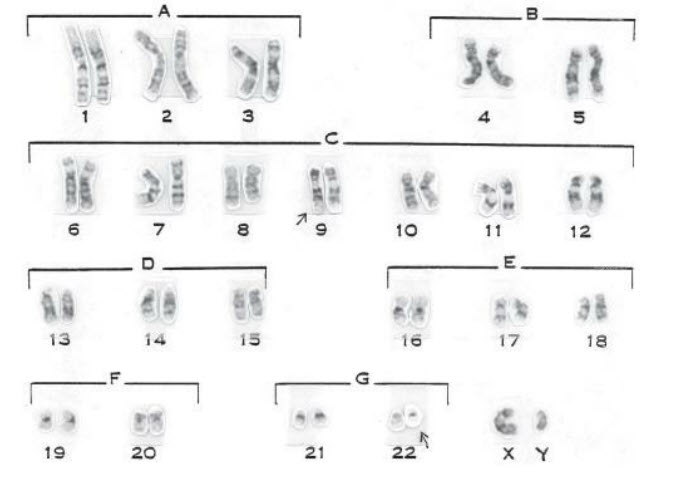Question 8#
A 60-year-old man presents with vague left upper quadrant abdominal fullness. He also has fatigue, malaise, and weight loss described as loosening of his pants. CBC shows:
- Hgb: 12 g/dL (normal 14-18)
- Leukocytes: 40,000/µL (normal 4300-10,800)
- Platelet count: 500,000/µL (normal 150,000-400,000)
Bone marrow biopsy shows hypercellular marrow. Chromosomal study is shown:

Which of the following is the most likely diagnosis?
A. Acute myeloid leukemiaB. Chronic myelogenous leukemia
C. Chronic lymphocytic leukemia
D. Acute lymphocytic leukemia
E. Myelodysplastic syndrome
Correct Answer is B
Comment:
This patient has chronic myelogenous leukemia (CML). Patients may be asymptomatic and diagnosed by abnormal CBC found incidentally, or patients may present with symptoms of fatigue, malaise, weight loss, early satiety or left upper quadrant pain due to splenomegaly. Patients with CML typically have a normocytic anemia, leukocytosis with mature cells more than immature cells, and thrombocytosis. Diagnosis can be confirmed with bone marrow biopsy and cytogenetic analysis. The cytogenetic hallmark is reciprocal translocation between chromosome 9 (Abl gene) and 22 (BCR gene) - t(9;22)(q34;q11.2), known as the Philadelphia chromosome. This translocation results in an oncogenic gene (BCR-ABL gene). Treatment with the tyrosine kinase inhibitor imatinib has been shown to be effective in this condition. The Philadelphia chromosome is not specific to CML. Some patients, with acute lymphocytic leukemia (ALL) also have the BCR-ABL gene, but these patients do not have thrombocytosis. Acute myeloid leukemia and the lymphocytic leukemias are not associated with this chromosomal abnormality. None of the other choices are associated with thrombocytosis and the cytogenetic pattern shown.